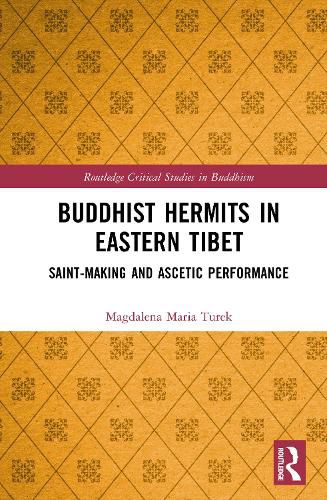Readings Newsletter
Become a Readings Member to make your shopping experience even easier.
Sign in or sign up for free!
You’re not far away from qualifying for FREE standard shipping within Australia
You’ve qualified for FREE standard shipping within Australia
The cart is loading…






Buddhist Hermits in Eastern Tibet explores the ritual and social empowerment of Buddhist monastics devoted to meditation under a charismatic master.
Based on ethnographic research at a remote hermitage in Yushu Tibetan Autonomous Prefecture, Qinghai province in China, this book examines contemplative practices and ascetic regimes as performances of renunciation, self-formation, and devotion, arguing that the master performs the ideal of Buddhist asceticism via his body and in front of a participant audience. Paralleling Tibet's famed hermit Milarepa (11/12th century), the ascetic master Tsultrim Tarchin is believed to have achieved liberation "in this body and life," demonstrating that renunciation can be empowering and elite practices and local tradition can be relatable to untrained laity and transnational practitioners alike. Providing new insights and capturing a vital aspect of the ethno-religious revival among Tibetans in China, this publication enhances our understanding of Buddhist meditation in retreat and of the social and embodied dimensions of spiritual liberation.
This book will be of interest to academic researchers and students of Buddhism, Religion, Anthropology and Asian Studies.
$9.00 standard shipping within Australia
FREE standard shipping within Australia for orders over $100.00
Express & International shipping calculated at checkout
Buddhist Hermits in Eastern Tibet explores the ritual and social empowerment of Buddhist monastics devoted to meditation under a charismatic master.
Based on ethnographic research at a remote hermitage in Yushu Tibetan Autonomous Prefecture, Qinghai province in China, this book examines contemplative practices and ascetic regimes as performances of renunciation, self-formation, and devotion, arguing that the master performs the ideal of Buddhist asceticism via his body and in front of a participant audience. Paralleling Tibet's famed hermit Milarepa (11/12th century), the ascetic master Tsultrim Tarchin is believed to have achieved liberation "in this body and life," demonstrating that renunciation can be empowering and elite practices and local tradition can be relatable to untrained laity and transnational practitioners alike. Providing new insights and capturing a vital aspect of the ethno-religious revival among Tibetans in China, this publication enhances our understanding of Buddhist meditation in retreat and of the social and embodied dimensions of spiritual liberation.
This book will be of interest to academic researchers and students of Buddhism, Religion, Anthropology and Asian Studies.